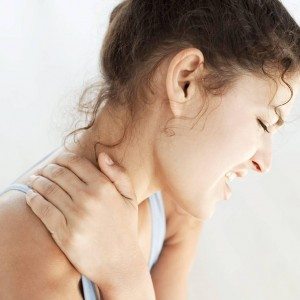Chronic pain is a family trait says a new study from the Norwegian University of Science and Technology
Is the tendency for chronic pain inherited? In the book, Cheating Mother Nature, what you need to know to beat chronic pain, it explains that we not only look like our parents, but walk and are built like them too. Most people who are significantly asymmetrically built have mechanical issues that result in chronic pain, bad knees and other painful conditions. Most chiropractors, rheumatologists and even physical therapists see many of these patients who have been told they have conditions such as Fibromyalgia, polymyalgia as well as other painful problems. Often, body mechanics result in what we call back pain, frozen shoulder, knee problems as well as other common musculoskeletal complaints.
The healthcare system looks at most of these problems as unrelated conditions, however, body mechanics if you look at the macro (the whole person or holistically) as opposed to the micro (the part), you often see a completely different picture of why the patient is in pain. Often, the pain is a manifestation of who they are functionally, and who they came from (their parents). While it is obvious that we move traits from generation to generations, what has not been obvious is that many of these traits may also be the reason some of us are in chronic pain.
A new study from the Norwegian University of Science and Technology is now suggesting the link between chronic pain is most likely familial, and passed on from generation to generation. While they are vague on what the traits are that cause the chronic pain, Cheating Mother Nature is worth reading since it describes why you hurt, and what those traits are.
Read about it here
Study Suggests Potential Parent-Child Link in Chronic Musculoskeletal Pain
According to researchers from the Norwegian University of Science and Technology in Trondheim, CMP is “among the leading causes of reduced quality of life and disability in Western countries,” but there is little known about the parent-offspring association of CMP. They analyzed data from the Norwegian HUNT (Nord-Trøndelag Health) study, a population-based health survey that collected self-reported questionnaires and other information from people aged 20 years or older during 1984-1986, 1995-1997 and 2006-2008, to determine whether CMP is heritable and whether age or sex affects the association.
Using data from 11,248 parent-offspring trios (i.e., father, mother and child), the researchers found that “maternal and paternal CMP was associated with 20% to 40% increased odds of CMP in sons and daughters.” The strongest parent-offspring association was seen when both parents had CMP (odds ratio, 1.6; 95% confidence interval, 1.4-1.9). The age and sex of parents and offspring did not modify this association, the study found.
The researchers noted that not all the cases in the study were clinically relevant, and the data available did not allow them to test for genetic and environmental factors for CMP. Some researchers have shown that the development of CMP depends both on genetics as well as an individual’s social environment, so some parent-offspring associations may become stronger as the child gets older (Am J Clin Nutr 2010, 92:946-953; J Health Soc Behav 1990, 31:240-259).
Read Cheating Mother Nature, what you need to know to beat chronic pain available through Amazon.com
